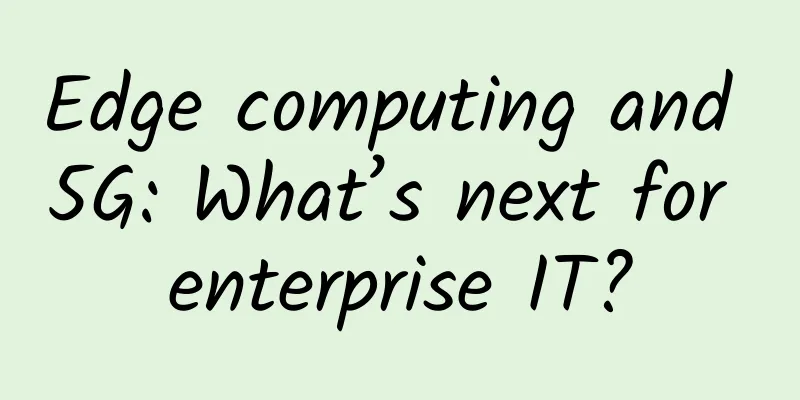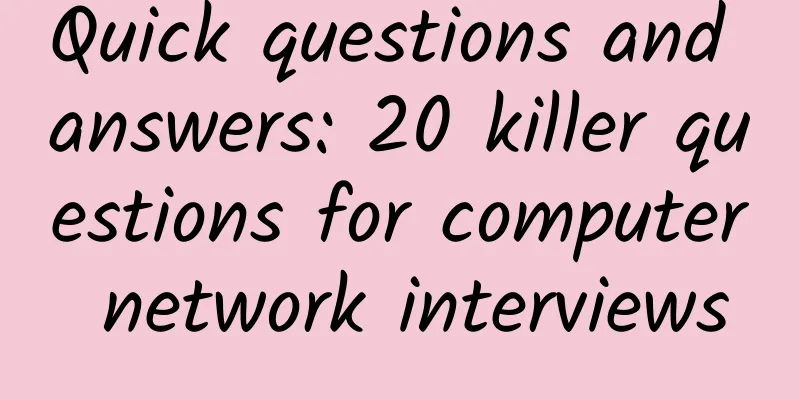Edge computing and 5G: What’s next for enterprise IT?

|
There are some obvious commonalities powering edge implementations: Containers and other cloud-native technologies come to mind, as does machine learning. But the specific applications for the edge built on these foundations are rapidly diversifying. "Telecom applications often have little in common with industrial IoT use cases, which in turn are different from applications in the automotive industry," said Gordon Haff, technical evangelist at Red Hat. This reflects the diversity of what he sees as broader edge computing trends in 2022. When you combine mature edge technologies with the expansion of 5G networks, enterprise strategies and goals can become more concrete. Simply put, “the mix of 5G and edge varies by enterprise business type,” said Yugal Joshi, a partner at Everest Group who leads the firm’s digital, cloud, and application services research practice. Broadly speaking, the 5G edge tandem is expected to drive the next phase of digital transformation that is already underway at many companies. As Joshi sees it, a new wave of high-value production assets, including the vast amounts of data generated by edge devices and applications, will become mainstream in IT portfolios and subsequently generate business impact. “Enterprises are combining 5G with edge locations and creating a range of smart devices and back-end systems that can communicate with each other, unlike the early days when network transformation did not touch last-mile devices,” Joshi said. A turning point for edge computing5G edge pairing is a long-tail event for the enterprise. But there are many reasons — certainly including the expansion of 5G networks operated by telecoms — to think that 2022 will be a watershed year. "We will see a transition from many smaller early deployments to large-scale, global production 5G network deployments following cloud-native design principles," said Chris Wright, chief technology officer at Red Hat. "Because we provide a cloud-native platform for 5G, we have a good understanding of this transition." “By 2022, 5G and edge will be unified into a common platform to deliver ultra-reliable and low-latency applications,” said Shamik Mishra, CTO of Engineering Connectivity at Capgemini. A wider range of factors are fuelling this belief, including, of course, more widely available 5G networks. “With the development of edge-to-cloud architectural models and the rollout of 5G, edge use cases have the potential to become mainstream by 2022,” said Saurabh Mishra, senior manager of IoT at SAS. The concept of the “last mile” is key. From a consumer perspective, the only thing most people really care about when it comes to 5G is: “This makes my phone faster.” The enterprise POV is more complex. At its core, while 5G’s relationship to the edge also comes down to speed, it’s often expressed in two related terms that are more familiar to the IT world: latency and performance. The relentless pursuit of low latency and high performance is embedded in the DNA of IT leaders and telecom operators. The relentless pursuit of low latency and high performance is ingrained in the DNA of IT leaders and telecom operators. Enterprise IT, meet MECJoshi and other analysts and IT leaders generally agree that multi-access edge computing (MEC) — also known as mobile edge computing — is integral to how (and why) enterprises adopt (and benefit from) 5G and the edge. It’s the behind-the-scenes infrastructure (the kind that everyday consumers don’t care about) that delivers on 5G’s sky-high promises. The specific definition of MEC can vary, but the term essentially refers to the closest pairing or hosting of edge devices to mobile infrastructure, typically in a telecom environment. It’s a not-so-secret sauce that reduces latency and expands the boundaries of what people think of when they say “edge.” This is necessary to realize the promise of 5G-enabled edge ecosystems and the applications that enterprises will develop for them. Latency is such a common problem in telecom and IT environments that it almost seems boring. But the potential impact of 5G and MEC is huge. Without both, for example, many of the loftiest claims about artificial intelligence and machine learning will remain out of reach. “It’s the difference between clicking a button and waiting five seconds for a response versus half a second,” Dan McConnell, chief technologist at Booz Allen Hamilton, told us last year. “With the explosion of data being collected and processed for high-intensity AI/ML algorithms, it’s important to ensure data-driven insights get to users as quickly as possible.” Enterprise Focus: Private 5G NetworksWhen people talk about 5G, they're usually referring to the major telecom networks (and the 5G-enabled devices that connect to them) that have started rolling out and will expand significantly over time. These networks will have an impact on the enterprise, of course. But for many businesses, the "next big thing" may be private 5G networks. It's not a perfect comparison, but private 5G networks are a bit like private clouds - the answer (among others) to the question: "What happens if I want to take advantage of the technology while retaining as much control as possible?" “In addition to typical 5G, more and more enterprises are evaluating private 5G models to transform specific parts of their business,” said Joshi, an analyst at Everest Group. “This combined with edge devices can meaningfully change the way enterprises work.” Joshi noted that use cases such as smart stadiums, connected fleets, autonomous vehicles, smart ports and telemedicine have generated widespread interest, and the combination of private/public 5G networks and edge architectures are likely to flourish. Cloud to edge (and vice versa) is both an architectural pattern and a budding ecosystem in which cloud providers, telecom operators, and enterprise IT all play important roles. “Business areas where significant computing can happen at the edge and the data generated or consumed can be transferred via 5G to a nearby edge server or cloud are the most powerful value creators,” Joshi said. As a result, major cloud platforms are already offering private 5G capabilities and related edge services. Cloud-to-edge (and vice versa) is both an architectural pattern and a budding ecosystem in which cloud providers, telecom operators, and enterprise IT all play important roles. “I see private MEC taking off with the emergence of edge cloud services and the convergence of the enterprise edge and the 5G network edge,” said SAS’ Mishra. “This is especially true in the manufacturing and energy industries given the presence of enterprise edge computing and the proven value of deploying edge workloads.” We’ll likely see Kubernetes and other cloud-native technologies also play a central role in managing workloads in these vast environments. Automation, consistency, reliability, and other issues will be critical, similar to hybrid cloud and other distributed environments. New horizons, familiar challengesConsumer adoption of 5G and edge technologies is pretty straightforward: Do I live in an area of coverage, and do I need a new phone? Clearly, there’s more to come, both from an operator and broader enterprise perspective. While the potential for 5G-enabled edge architectures and applications is huge and potentially lucrative, there are several challenges that IT and business leaders will face along the way. Many of them may look familiar. On the one hand, the combination of 5G edge in an enterprise environment always means deploying and managing not only IT, but also OT (operational technology) and so on. As with other major initiatives, there will be a lot of moving parts and pieces to manage. “Governance and scale will continue to be a challenge given the different people and systems involved — OT versus IT,” SAS’ Mishra said. “Decisions around which workloads live in the cloud versus the edge, and the lack of visibility into the security configuration of edge-centric applications will also be a challenge.” Scaling may be the biggest mountain to climb. According to Kris Murphy, senior principal software engineer at Red Hat, it requires precise planning. "Standardize ruthlessly, minimize operational 'surface area,' pull rather than push whenever possible, and automate the little things." 5G and edge technology will also bring up another familiar problem for CIOs — the occasional gap between what a vendor or provider says it can do and what it can actually do in your organization. Joshi said this is an important area that business leaders can prepare for now while the underlying technology advances and matures. "It is more important for enterprise IT to enhance its business understanding of operational technology and collaborate with various network equipment providers, cloud vendors and IT service providers," Joshi said. Lock-in may be another familiar challenge facing enterprise IT, Joshi said, highlighting the need for rigorous evaluation of potential platforms and providers. “Open source adoption and openness of the value chain, [including] RAN software, towers, base stations, cloud computing and storage” will be an important consideration, Joshi said, as well as a nose for finding substance amid the hype. This brings us back to the use cases. If you’re not sure what’s next for 5G and edge in your organization, start with the potential business applications. This should ultimately guide any further strategic development. Joshi sees increasing adoption of remote training using digital twins, remote health consultations, media streaming and real-time asset monitoring, among other uses. “Any enablers in 5G, such as small cells and low latency, are highly aligned with edge architecture,” Joshi said. “However, the purpose should not be to enable 5G, but to have a suitable business scenario where 5G adoption can enhance the impact.” |
<<: Let us say goodbye to TCP together!
>>: HTTP Cache Protocol Practice
Recommend
TCP/IP protocol family architecture--network communication
Computers and network devices need to follow the ...
The key role of network connectivity in the development of smart cities
Smart cities aim to achieve greater efficiency, s...
The greater development of 5G lies in industrial applications
[[181724]] Some people say that 4G has changed ou...
With 5G in vogue, how should I choose among 20 packages from the three major operators?
2013 was the first year of 4G in China. Seven yea...
[Black Friday] HawkHost: Cloud Web Hosting/Semi-Dedicated 70% off, Hong Kong/Los Angeles and other data centers
HawkHost's Black Friday promotion this year i...
The construction enthusiasm remains unabated, and 5G will drive the full resumption of work and production in the industrial chain
The novel coronavirus pneumonia epidemic that beg...
Nginx's four-layer load balancing (Stream module) configuration based on TCP/UDP ports
HTTP load balancing, which is what we usually cal...
Five-minute technical talk | A brief analysis of the stress testing method of the audio and video communication and signaling SIP protocol
Part 01 Audio and video communication process Aud...
How do we correctly interrupt a thread that is executing? ?
[[358852]] The author has developed a simple, sta...
The world's first home 10G modem was successfully tested: download and upload speeds exceeded 4 Gigabit!
Comcast, an American telecommunications service p...
The future of the telecommunications industry – opportunities and challenges
The endless emergence of new technologies and con...
Will the difficulties faced by the communications industry continue in 2019?
Even though this topic is a bit heavy, as researc...
5G is not here yet, but it is within reach
5G is currently the most eye-catching new technol...
Ministry of Industry and Information Technology: my country has built a total of 1.037 million 5G base stations
5G is one of the topics that all sectors of socie...









